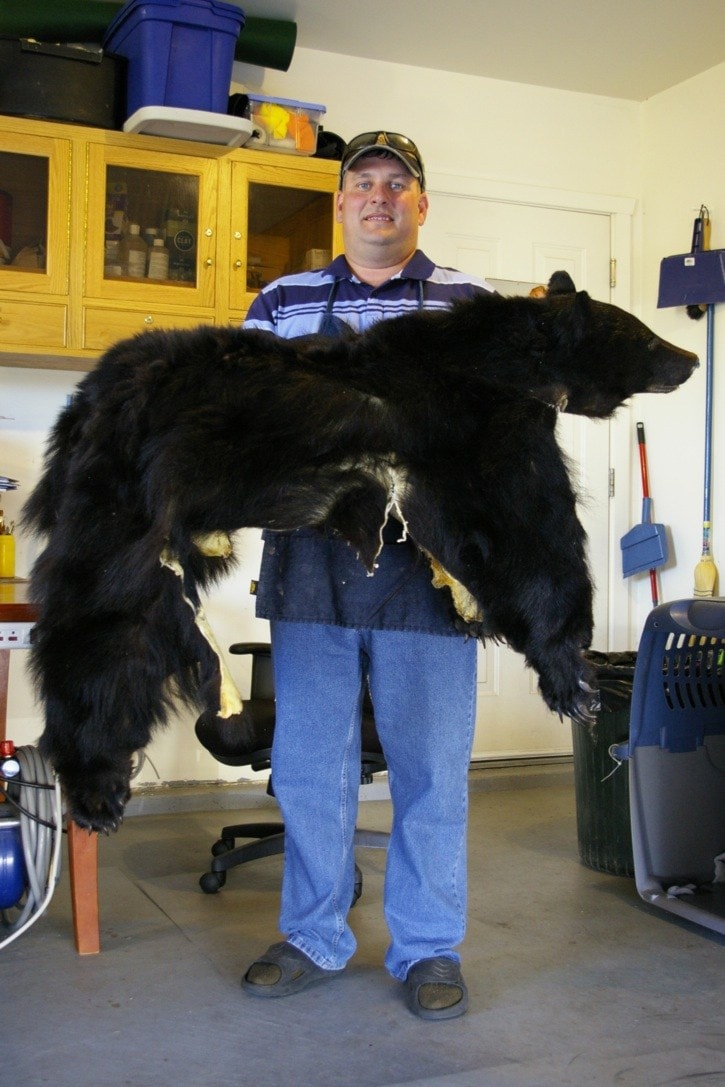As a wide-eyed seven-year-old visiting his aunt in Quebec, Sunriver dweller J.P. Vincent saw something he would never forget.
“In her big, big log cottage she had an owl, this frickin’ owl was in the corner and it had big yellow eyes. And everywhere you look it looked like the eyes were following you.”
The owl was a preserved specimen done by a taxidermist, that sparked Vincent’s interest to pursue the trade some 30 years later.
“I’ve always talked about it with buddies you know, ‘yeah yeah I’m going to get started with taxidermy,’” said Vincent, whose day job is a supply technician with the Canadian Navy.
“We always talk about yeah, we’re going to start this, we’re going to start that and you know what? I did it,” he said with a grin.
Joining the military at 18 and moving around Canada, free time wasn’t in abundance. When he did find some, hunting was something Vincent enjoyed. Starting with grouse at 13, he worked his way up to deer, moose and bears. After moving back to B.C. in 2009, he shot a black timberwolf in Prince George that he took to a local taxidermist in Sooke and that changed his life.
“I called him up, and said ‘can you do my wolf for me’ and he said ‘sure.”
And so, Vincent took his prize to see Jens Teglman of the now-defunct Sooke Taxidermy. Fascinated by his operation, Teglman agreed to let him watch. The two quickly became friends.
“You know, I go down there, shoot the s--t, have some coffee — next thing you know he’s like ‘throw an apron on, here’s a knife.’ I’m like whoa!”
The relationship evolved from friendship to teacher/apprentice, with Teglman agreeing to pass on his knowledge for free with the stipulation that Vincent not start a similar enterprise in Sooke until he retired. That happened October of last year, when he handed over the reigns of the business and Sooke Taxidermy became Vinker Taxidermy, an amalgamation of Vincent and his wife’s name.
He now operates his business out of the garage in his Sunriver home. Incredibly tidy (i.e. no blood stains), the sparse workshop didn’t look unlike any other garage. Some cabinets, a large work table, scattered machinery against the wall. He explained that everything he needs is there, from a fleshing machine that thins out an animal’s hide to a plier-looking device designed to split open an animal’s ears so tanning solution can seep in.
“I do all my own tanning, I don’t send it away,” he added.
Vincent said all the work is very meticulous, as well as creative — how you pose the figure, recreating the facial expression — something people might not associate taxidermy with.
“The creativity, believe it or not, starts the minute you skin the animal out.”
The skin is pretty much all that remains the same. The bones are discarded, the meat is given back to the owner, and the rest is stretched over a plastic mannequin (one of the few things he doesn’t fabricate himself) that he orders from Alberta, or the United States. Models of every size and shape imaginable are available, even ones for non-conventional species like the African Black Buck and Cape Buffalo that Vincent said he was fortunate enough to do for a client.
Aside from skin mounts, he also does fiberglass replicas of animals. For instance, Vincent is currently working on the repair of a salmon that was created off a picture the owner took of the original catch.
Turnaround time for a project is anywhere from four to seven months, depending on the size and complexity. Price can go from $36 an inch for a fish to $800 for an entire four-foot bear.
“I don’t promise customers anything,” he said. “It’s taxidermy, it’s not like building a boat or something. When it’s done, it’s done.”
A lot of the time is spent waiting for things to dry and cure. Most of the work is also done during evenings and weekends since Vincent is still in the navy, although that will eventually change.
“I’m coming up at the end of my career in the military and this is going to be my full-time job.”
